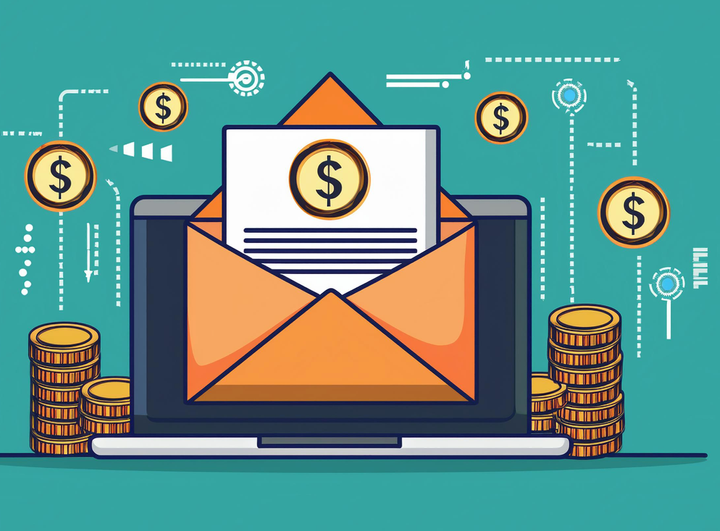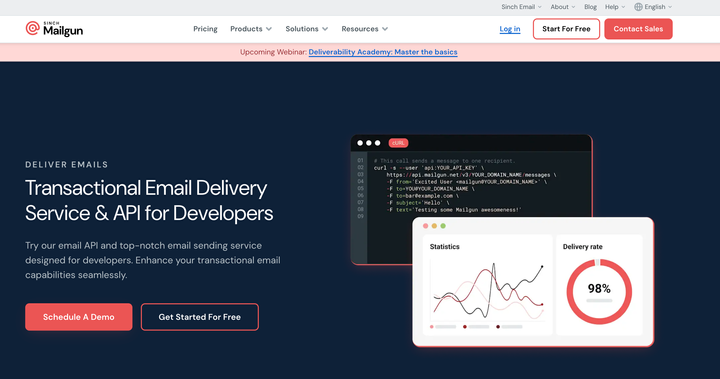How to Continuously Re-Engage Your Subscribers List and Grow Your Business
Re-engage your subscribers list and retain potential customers through these tested guide and tips. Designing re-engagement emails serve a strategic purpose which helps your business thrives in the face of competition.
Effective email marketing doesn’t end with a subscriber list and sending the first message. Real results come from perseverance and hard work; it involves standing out in the crowd and getting people’s attention. We understand it’s a big challenge since you’re up against a lot of ‘noise, even if you have a permission-based email list. And there’s a big chance that some of those on the list are lost in the noise, or worse, they’re “dead” email subscribers.
This isn’t acceptable when it comes to email marketing, and it deserves immediate attention. If you’re facing the same challenge, read on and find a few tested ways to reverse this disturbing trend.
But first, know the reasons why your subscribers flat-line
First, it’s best to recognize the different reasons for re-engagement to create a re-engagement strategy. Remember, most of your subscribers have opted in, so there must be a compelling reason behind the disengagement. Knowing the main drivers for disengagement makes it easier to revise email marketing strategies and develop solutions.
- Email overload. Did you get too excited about your email list? Or did you simply fail to follow our recommendations for IP warming for marketing in our previous blog section? Regardless of the reasons, swamping your subscribers with massive emails is counterproductive. First, you’ll appear ‘spammy’ to most users, and second, your redundant emails may have ended up in your customers’ “I’ll read it later” pile…which never came. If you’re stuck in this predicament, you can give an option to decrease email frequency.
- Poor content quality can alienate subscribers. Emails that are irrelevant, boring, and don’t bring value can alienate readers. You’ll need to give your readers and subscribers reasons to click and read your messages.
- Misleading titles and subject lines. Clickbaity—subject lines don’t just deliver; they’re irresponsible to use in email marketing in the first place. They are comparable to broken promises that erode subscribers’ trust in your brand, leading to disengagement.
- Some were never really interested in the first place! In building our initial email list, we create an expertly designed opt-in to draw attention. However, this still needed to offer us quality leads. Perhaps a few individuals signed up because the discount promotion was “too good to miss”. Or, you may have unintentionally attracted those not interested in your service but just want the freebies or the chance to join a raffle.
Before moving forward, you’ll also define inactive subscribers in your email list. Most marketers will say that the ‘inactives’ have not responded, clicked, opened, or acted on your emails in the past 6 to 12 months. It’s a massive issue for the email marketing industry since the average list’s inactive rate is around 60%.
So, if you have 1,000 subscribers in your email list, there’s a big chance that only around 400 will open, read, and potentially use your product or service. Considering our time, money, and resource investments, having 60% of the list not respond after signing up is a huge loss in engagement and potential revenues.
A few tested tips on how to re-engage your subscribers
If some of the contacts in the email list are no longer responding, at least engaging with your brand in other channels, then you can check and implement the following suggestions.
Make your emails relevant
Consumers are bombarded with emails. An old study says the average office worker receives 121 daily emails; the desktop click-to-open rate for marketing emails is 18%. We’re sure today's numbers are roughly the same or even worse.
As an email marketer, you must provide relevant information based on the interests and topics your subscribers shared when they signed up.
Adjust the sending schedule
Adjusting the timing of your emails can make a difference in how your subscribers see your message and brand. The send time may result in emails being buried in their inboxes because they arrive before or after checking their emails. Or you could only send emails on weekends when they read emails, on weekdays, or vice versa. A minor tweak in the sending schedule might be the missing formula to regain their attention. If the slight adjustment increases clicks and opens, you can change your email program's schedules for different demographics.
Spice up your emails by modifying their attributes
Find new ways to reach them using emails. For example, you can change the style of imagery you’re using, tweak the tone of your email, or even drastically change how you write your subject lines. When subscribers are accustomed to seeing a familiar theme or pattern in the subject lines or how you format the messages, they may lose interest. Break patterns and attention, and get their attention by writing differently. If they see something new in the inbox, there’s a big chance they’ll take a second look and open the email.
Give them the special treatment
We like to feel appreciated and unique; the same is true for our readers and subscribers. Provide your disengaged and disinterested readers with the attention and perks they deserve, like promos, access to unique content, or exclusive discounts. For example, you can provide them with promo codes for discounts on new products and give them early access to products and services you’re about to launch.
Re-connect by sending ‘We miss you’ emails
To maintain a healthy email list, we recommend what experienced marketers call ‘we miss your emails.’ If you can pull off this campaign, your next batch of emails can boost engagement and bring back inactive subscribers.
To adopt this campaign, you’ll need to be creative and thoughtful to grab the recipient’s attention and start the re-engagement. The good news is that there are plenty of online tools and resources that you can use to start your own ‘we miss you email campaign’.
Sometimes, the best approach is direct, like asking the recipient if they want to receive emails from you. This trick can help you update your email list and give subscribers options on whether they wish to opt out or continue receiving communications from your business.
The trick here is to become creative, like Grammarly did with its ‘wrinkle in time’ badge with a CTA ‘GO’ button to motivate previous users to use the service once again. If a customer previously used and installed your software, you can remind them about their experience and share that there have been many upgrades and changes since they left!
Using the ‘we miss your emails,’ you can tap into returning leads that have previously supported your business.
Ask your subscribers to update their contact information
Another way to re-engage your subscribers is to ask them to update their email information or contact details. This approach allows subscribers to provide a new email address if hers has changed, adjust their email settings, or even sign up for social media updates.
By sending out this re-engagement email, we give our subscribers options on how they prefer to engage. For some of our subscribers, a better way of engagement is through social media, which you can use for another marketing campaign.
Also, learn to respect their email preferences after they have completed the task. If they prefer to receive fewer emails or opt-out completely, respect their decisions. Use the opportunity to clean up your email list, tweak your email settings and content, and focus on other interested subscribers. Not doing so can increase inactivity and may negatively affect your business reputation.
Why should you launch your re-engagement email campaign now?
This section will discuss why your business should have a re-engagement email campaign. As mentioned, having a 10,000-strong email list doesn’t mean you have a captive market of 10,000 customers ready to support your business. Industry stats say that the inactivity rate is 60%, which means that if you have 10,000 subscribers on the list, only around 4,000 are active, and the rest require your attention through re-engagement.
A re-engagement email marketing campaign offers plenty of strategic purposes for your business. Let’s cover the most common and beneficial for small businesses:
Firstly, an effective re-engagement email strategy can maintain and clean up the email list by identifying unresponsive users that impact the email delivery rate. Sometimes, your ISPs and email providers assess the sender’s reputation based on engagement rates. So, your IP reputation may suffer if you have a high inactive rate, necessitating a re-engagement email campaign.
Secondly, your re-engagement emails can help promote customer retention. Sometimes, retaining customers is easier and more cost-effective than targeting and acquiring new ones. You can tap a significant revenue stream by reactivating inactive subscribers and customers. You can do this by developing a win-back email with an exciting offer like discounts or by showcasing new products or services.
Finally, a re-engagement email campaign allows subscribers to self-segment and adjust their email preferences. By providing them with options for receiving your emails, from frequency to type of content, you can empower your potential customers to interact with your small business on their terms. You can use the insights from these campaigns to customize your future email marketing efforts, improving your brand’s standing.
By successfully pulling off a re-engagement email campaign, you can improve your advertising’s open rates, engagement rates, and the overall impact of your email marketing campaign on your audience.
Wrapping up
The sad part about email marketing is that some email marketers and new business owners think compiling an email list and automating sends is a formula for success. In real life, email marketing is always a cyclical process of building an email list, sending emails, getting feedback, addressing issues, and rebuilding a new and upgraded list. In short, there should always be a provision to re-engage the subscriber base because, sooner or later, they’ll end up bored and disinterested in your emails and content.
The simple yet creative steps we’ve mentioned can significantly influence your business since many subscribers are interested in how your business can help them. They just need reminders about the company and what it can do for them.
As business owners, we should always look for opportunities to reconnect and remind. We should understand our customers' interests and provide them with resources and solutions to simplify their lives. Subscribers, as potential customers, will continue to ask: What’s in it for me? So, as a business owner and marketer, the challenge is not just to automate sends; anticipate what your subscribers feel, need, and want.
Do you have other tips or suggestions on running a re-engagement email campaign and reconnecting with inactive subscribers? Send us a message or comment!




